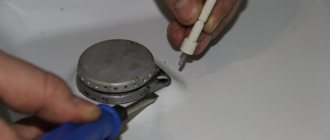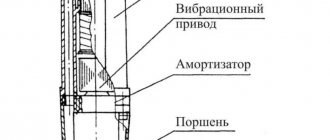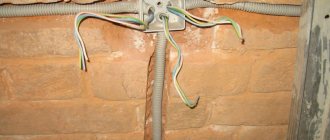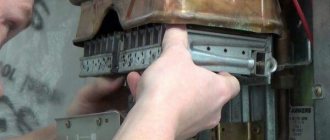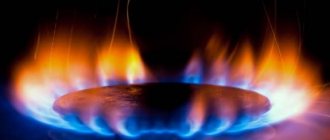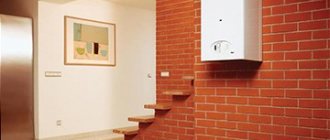The gas stove is as popular today as ever - in cities, villages, and dachas. Its advantages are a long service life, low cost of use, and the ability to work where there is no centralized supply of gas or electricity. Many housewives value gas stoves for the speed of cooking. However, it is necessary to remember that gas is an explosive substance. Gas stove malfunctions can lead not only to property damage, but also to death.
The best solution when gas equipment breaks down is to call a specialist. In large cities, repairing gas stoves is easily done at home. It has proven itself to be excellent in Moscow and St. Petersburg. Its employees quickly travel to any area and professionally handle slabs of any type.
It is more difficult for those who live in remote areas. In this case, you must contact the nearest service center. At the same time, you need to know what the main malfunctions of gas stoves are and the reasons for their occurrence. In some situations, it is quite possible to deal with a breakdown on your own.
In most cases, repairing gas stoves requires special knowledge, experience and equipment.
Additional Information
It is not prohibited to use classic household methods, such as soda, vinegar, citric acid or alcohol.
To clean a gas oven, you can use store-bought and folk cleaning products.
Use a regular foam sponge, or a soft washcloth or cloth. Apply products only with a creamy consistency, distributing them evenly over the enamel. To completely remove adhered grease and stains, leave for 1-2 hours so that the product removes all dirt and germs from the surface of the gas stove. Next, remove the burners and soak them together with the cleaning agent in water for 1-2 hours.
Afterwards, rinse everything off with a damp sponge, wipe with a cloth and replace the dry burners.
Please note: Follow safety precautions when using the stove and do not panic if you smell gas. Just turn off the gas pipe valve and try not to stay in the apartment until specialists arrive
Adviсe:
Do not turn the gas knobs to full power, as if the gas supply is too powerful, the flame may come off the burner, thereby releasing carbon monoxide into the air. Do not leave a switched on gas stove unattended. Monitor the quality of the equipment; if you see a yellow flame, the oven in the gas stove does not burn, or any other problems arise, call specialists in a timely manner. Do not allow liquid to splash onto the surface of the stove, as this may extinguish the fire and cause a gas leak. Check your gas water heater. Pay attention to whether the hood is working. It is very simple to determine this; you need to bring a burning match to the chimney, hold it for a while, if the flame is drawn in, it means the hood is working properly
If the flame burns as usual or deviates to the side, then the water heater cannot be used.
It is necessary to periodically monitor the operation of the oven.
Troubleshooting color changes
If, after cleaning the stove, the color of the flame has not changed, call gas workers.
The main cause of problems is contamination. You can eliminate yellow and even red flames by simply cleaning the burners. In difficult cases, when it is necessary to replace the nozzle or adjust the level of mixing of methane and oxygen, the help of a specialist is required. You don't need any skills to remove dirt.
The recommendations are simple:
- metal and enameled surfaces should be cleaned with liquid agents; abrasive agents should not be used;
- glass ceramics are washed with soapy water;
- The holes are cleaned with a stiff wire brush;
- Do not use chlorine-containing products - these compounds burn together with methane;
- After washing, wipe the stove with a dry cloth.
Dust accumulating on the surface of the stove, along with the air, enters the burner. Here it is charred, melted and adheres to the surface of the channel. It turns out to be difficult to remove.
Safety rules for stove repairs
When inspecting and repairing the stove, you must follow simple safety rules - turn off the fuel supply, turn off the electrical power, and children and animals should not be left in the room. Upon completion of work, you should make sure that the burners are burning evenly and that the connection between the stove and the gas pipeline is tight.
In the event of a serious breakdown, it is undesirable to carry out repairs yourself, without the appropriate experience. In this case, it is better to call a specialist from an organization with which an agreement has been concluded for servicing gas equipment.
For unauthorized interference in the gas supply system, liability is provided for, specified in Article 9.23 of the Code of Administrative Offences. The fine will range from 10 to 30 thousand rubles.
If a fire or explosion occurs due to the fault of the owner of the equipment, charges will be brought against him, in accordance with paragraph 6 of part 3 of Article 158 of the Criminal Code of the Russian Federation. The amount of penalties for illegal actions: from 100 to 500 thousand rubles. Punishment for this offense is also provided in the form of imprisonment for a term of up to six years or forced labor for a term of up to 5 years.
The cost of carrying out work by specialists
Malfunctions occur suddenly and require quick fixes, especially when a gas stove breaks down. However, not all home appliance owners have the necessary skills. When it is impossible to carry out repairs yourself, you have to call a specialist to your home. What expenses await the owner:
- replacement or repair of a gas supply valve - from 300 to 1,200 rubles;
- nozzle cleaning - from 400 rubles;
- replacing the oven lamp - from 400 rubles;
- gas adjustment - from 500 to 900 rubles;
- lubrication and cleaning of rods on the feed lever - 900 rubles;
- replacement of rods - 1200 rubles;
- thermocouple replacement - 900 rubles;
- replacement of the ignition unit - 900 rubles;
- cleaning of supply contacts - from 900 to 1,100 rubles;
- change of sealing gum - from 500 rubles;
- replacement or repair of a spark plug - 800 rubles.
Prices depend on the stove model and the region where household appliances are serviced and repaired.
If you have a faulty electric ignition
Almost all devices are now equipped with it, which has a positive effect on ease of use. Let's first define how electric ignition works and works.
Electric ignition consists of four parts:
- transformer (unit) operating from a 220 V electrical network;
- electrical wire leading from the transformer to the ignition mechanism;
- ceramic candle;
- ignition button located on the control panel, next to the rotary switches.
The mechanism of electric ignition is as follows:
- When you press the button, the circuit closes;
- The transformer generates the current for the spark;
- The pulse is supplied through the wires to the gas burner;
- The ceramic candle produces a spark and the burner ignites.
It is noteworthy that the candle fires on all burners without exception, however, only the one that receives gas is ignited.
It is very important to ensure that the network always has one voltage - 220 V. To protect your stove, you can buy a household voltage stabilizer, which will protect you from unexpected current surges
Otherwise, short circuits and unstable operation of the network negatively affect the electric ignition and can cause breakdown. If your hob exhibits the following malfunctions, then the problem is with the ignition:
- you turn on the button, but the ignition does not work;
- one or all spark plugs spark;
- you release the button, and the ignition works.
You turn on the button, but the ignition does not work
The first and most common reason is contamination of the mechanism button and/or burner with dirt and combustion waste. Cooking food entails splashing fat and food all over the stove, so this problem is not uncommon. Clean the ignition button, wipe the burner, clean the nozzle with a needle or any other thin stick, wait until everything is dry.
One or all spark plugs are sparking
If the spark plugs on all burners sparkle orange or yellow and operate intermittently, then the problem may be a faulty electric ignition unit. It needs to be replaced, but doing it yourself is extremely difficult. The block is located in the middle of the panel; it needs to be disassembled and the contacts disconnected, so it is better to trust professionals in this situation. To be sure that the problem is in the transformer, do the following:
- in the dark, with the lights off, turn on the ignition button;
- if a spark appears on all burners of the color described above (yellow, orange), the unit definitely requires replacement;
- if the spark is blue, the unit is working.
If the integrity of the spark plug is damaged or its rod is oxidized, it will spark orange or yellow intermittently. This is solved by replacing the faulty spark plug. However, such problems are quite rare and this is due to the design of the candle itself. It is a steel wire, one millimeter thick, encased in porcelain. For a candle to become unusable, it must be in very unfavorable conditions of high humidity or subject to shock.
You release the button, but the ignition works
This may be due to a faulty transformer or oxidation of the contacts.
When washing the panel or boiling water, liquid can penetrate into the middle of the device, onto the contacts. With constant leaks and heat coming from the burners turned on, the contacts oxidize. They become rough, they can stick together and break. Their technical cleaning and high-quality drying will help.
Results of the work done
After gas supply and control washing, no gas leaks were detected! The faucet is sealed and works much more pleasantly, without jamming!
Alexander Birzhin, rmtn.ru
Details Published 12/20/2016 16:38
What should we do if we smell an unpleasant gas smell in the kitchen? There is a high probability that this is leaking from the gas valve, which is located directly in front of the device.
As soon as you hear the smell, you should call emergency services, because the gas is highly explosive.
But it’s also worth knowing how to deal with such situations yourself. If the valve is to blame for the leak, then it is better to replace it; for polypropylene pipes, a frialen 63 ball valve is suitable. But simply lubricating the faucet may be enough. To do this, we will study in detail the instructions on how to carefully lubricate the faucet.
Flat slot screwdriver
Rag
Gag
Graphite, solid oil or technical Vaseline
Soap
1
Examine the gas tap, paying attention to how the main part of the tap is made. It can be made in the form of a cone with a hole all the way through, or pressed with a twisting spring using a special plug. Unplug all electrical appliances;
Unplug all electrical appliances;
Ask all uninvolved people to leave the room, if possible, the premises.
Make sure there is no open flame in the room and never smoke while working.
3. Next, unscrew and remove the valve from the faucet and gag it to reduce the gas flow. Carefully remove all old grease with a dry cloth and apply new grease without filling the holes.
4. After everything is done, you need to very quickly replace the gag in the gas tap with a bolt. Carefully twist the spring and clamp it with a plug. We resume the gas supply if you shut it off earlier.
5. Ventilate the room well. Then prepare a solution of soap and apply it to the tap. If there are no bubbles, then you have done the job. But still, when there are bubbles, try to assemble the faucet again and check for leaks in the same way. When the problem persists in this case, urgently call the gas service. Since even the smallest leak can lead to a destructive explosion.
Gas is the main assistant to the cook and fireman; with it you will not be cold and hungry. Knowing the safety rules and behavior patterns during emergency situations will protect you from harm and help strengthen your “friendship” with the gift sent to us by Mother Nature. Still don’t know what to do when the gas tap in the kitchen leaks and how to check if there is a leak? Well, let's get down to business then.
If there is a lot of fat: how to wash a gas stove
For the highest quality cleaning and removal of all contaminants, it is necessary to carry out preliminary preparation.
Sprinkle baking soda onto a damp surface in an even layer and let it sit for 30-40 minutes. This method is not complicated and makes it possible to clean the stove and oven. The oven can also be cleaned this way.
If there is too much grease, then it is better to apply a cleaning agent on it and leave it for a while, and then wipe it off
After waiting time, you can start cleaning; water and baking soda must be removed from the surface of the stove using a soft sponge.
In no case should steel wool be used when cleaning the stove and oven, as they can cause damage to the surface, but it is better to use a sponge and a toothbrush or cotton swabs, but this is in the most difficult to reach places.
To clean the grate on a gas stove, you must use the soap solution described above. Citric acid or juice and vinegar are also excellent auxiliaries. They can be used in place or separately. Ammonia and vinegar can remove dried and burnt-on stains on the surface of a kitchen gas stove.
All gas stoves are equipped with removable handles.
The main thing here is not to rush, but to act carefully, without rushing and without breaking the plastic.
Stoves from different manufacturers certainly differ from each other. However, as experience shows, most design solutions from different manufacturers are VERY, VERY similar.
Before starting work, turn off the gas supply using the shut-off valve.
Gas stove Hephaestus, Indesit, Electrolux, Darina (knobs that need to be pressed and turned when igniting).
Just pull it towards you, along with the ring on which the symbols are drawn.
If you have any difficulties, try treating it with WD-40. Then, inserting one knife into the gap between the ring and the handle itself, bend it a little. And on the opposite side, use a second knife, acting as a lever.
If it doesn’t go through the cloth, use pliers carefully.
Then soak the hands in water with the addition of fairy. After a while, the fat will turn white and be wiped off with a toothbrush.
How to lubricate the tight rotating mechanisms of the crane?
Factory lubrication of the faucet is designed to last approximately five years. In Soviet times, gas workers used graphite lubricant (called NK-50), LG-Gaz41, LS-1P.
Graphite (crushed carbon), which forms the basis of the lubricant, is able to fill microscopic irregularities in parts, while reducing friction.
It has great refractoriness and does not dry out for a long time.
You can use solid oil or technical petroleum jelly.
Tips for repairing gas stoves with your own hands
Methods for cleaning gas burners
In order not to spend money on purchasing special means for cleaning stubborn dirt, you can use traditional methods:
- Using table vinegar. Remove the burners from the stove. Disassemble them into two parts: the divider and the lid. Then, take a large saucepan, pour a liter of boiling water into it, pour in half a glass of table vinegar. Place the burners in the resulting liquid for half an hour. After that, remove the parts, rinse them in clean water, and wipe dry with a soft cloth. The dirt should come off completely. Put the burners in place and check them for serviceability.
- Using baking soda. It will certainly be found in any home. Baking soda copes especially well with stubborn greasy stains. Initially, remove the burners and wash them in a soapy, detergent-based solution to remove soot and deposits. Take 4 tablespoons of baking soda in a bowl and add water to make a thick paste. Using a sponge, apply the resulting mixture to the burners. Leave in this state for half an hour. Then use a toothbrush to clean all the gaps on the divider so that no dirt particles remain. Rinse them in clean water and dry them with a towel or napkin.
- Detergent for cleaning burners. Soaking parts in soapy water is another effective and inexpensive way to clean dirt from burners. Fill a bowl with two liters of hot water and dissolve 4 tablespoons of any dishwashing detergent. Place the removable parts of the burners in the resulting liquid for one hour. After the specified time, rinse the parts in clean water and wipe dry with a towel. Assemble the gas stove.
Main symptoms of a malfunction
If the gas oven stops working, it is necessary to carry out basic gas control diagnostics.
First open the top cover and the burner or hotplate. To do this, unscrew and remove the two side plugs on both sides. Visible signs of malfunction are as follows:
- there is gas flow, but with the standard procedure of pressing the button, the flame does not appear;
- food is heated unevenly: it can burn at the edges and be cold in the center or vice versa;
- the oven does not close or the door does not press well to the base and cannot fully lock;
- immediately after ignition, the fire slowly goes out;
- it becomes impossible to regulate the heat in the oven;
- as long as the handle is held, the gas cannot go out on its own;
- the oven smokes, and the fire emits a yellow-red glow;
- the flame emanating from the burners has different heights;
- the opening of the spirit door occurs with tension, as if it is being held inside;
- With little use, the oven becomes very hot.
Important If one or more of these symptoms occurs, it is necessary to inspect the equipment and identify the malfunction. Gas is a dangerous thing, so if you are not confident in your abilities, it is better to call a specialist to your home.
What to do if the burners go out
There are several other types of problems with gas stoves that cause the burners to go out. Among them the following stand out:
- Incorrect burner operation leading to fire extinguishing
- If the burner is not working properly, it is very difficult to turn on the tap.
- All burners burn poorly at once
Regardless of when the burner goes out: immediately after setting fire or a little later, the reasons for the extinguishing are the same. The main ones are:
- Problems with the gas control system. This causes the burners to malfunction. In this situation, it is necessary to replace the electronic valve or temperature sensor, and possibly the entire system.
- The nozzle is dirty. In this case, it is necessary to clean the nozzle (cleaning instructions are described above in this article) or replace it.
- The temperature sensor does not heat up when the burner is lit. The reason is improper handling of the device, in which it takes an incorrect position.
How does a gas stove work?
The design of gas stoves varies depending on the type of equipment. But all such devices include:
- burners;
- hob;
- oven.
Some types of gas stoves are complemented by an electronic control unit for the burner and other components. In particular, equipment is often equipped with a sensor, which, if the fire goes out, shuts off the supply of “blue” fuel.
Burners
The burners consist of the following components:
- gas supply nozzle;
- swirler;
- throttle;
- guides;
- lid;
- divider
The latter divides the general flow of flame into several uniform tongues extending outward. Older stoves use diffusion and kinetic burners. The first ones are installed in ovens. Diffusion burners are distinguished by the fact that gas is mixed with air (due to this process the fuel ignites) in a natural way. Modern stoves use combined burners.
Gas flow control
In the center of the stove burner there is a thermocouple that regulates the gas supply. When heated, this element generates a current that is supplied to an electromagnet. The latter holds the damper open, so that gas flows to the burner continuously. If the fire on the burner goes out, the thermocouple begins to cool. Because of this, the magnet is discharged, as a result of which the damper automatically closes, interrupting the gas supply.
This configuration significantly increases the safety level of the slabs. However, due to the thermocouple, you have to hold the regulator knob down for several seconds.
Internal structure of the stove
Before you start repairing a Gorenje gas stove, it is important to understand the structure of the equipment in order to understand in which area you need to look for a breakdown. And also study the rules for the safe operation of gas appliances
Despite the huge variety of equipment in different price categories, all gas stoves have the same structure, and differences can only be observed in the original parts of each model.
Almost all new models of Gorenje gas stoves are equipped with a piezo ignition system, which often causes frequent equipment breakdowns
A classic gas stove is equipped with four burners, each of which is secured to the inner panel with bolts. The burner includes a lid, a divider and an injector, and a copper tube with a special “American” type fastening is connected to it. This is how gas is supplied to each burner.
If there is an electric ignition system, two candles are supplied to each burner: one is intended for ignition, and is powered by a piezoelectric element, while the second acts as a thermocouple that controls combustion.
The auto-ignition spark plug has a ceramic caftan, which prevents the spark from breaking below the set level, while the candle with a thermocouple is equipped with a bronze caftan, a powerful heat conductor.
The gas stove manifold, which is responsible for controlling the gas flow, is located under the top panel of the equipment. It is presented in the form of a thick tube, from which solenoid valves diverge to each burner - conductors responsible for controlling the gas flow. This way, even if one burner flame goes out, the other burners can still function safely.
What to do if a problem is detected?
It happens that the problem of weak gas supply and flame extinction is caused by accumulated grease on the electric ignition or regulator. By cleaning them from contaminants, you can eliminate this problem. Also check the spark plug; if the holes are clogged, the flame crown will be small or smoky.
It may be worth monitoring whether oxygen is entering the oven. To do this, check that the oven door is closed tightly.
Many, noticing that something is wrong, wonder: what is wrong and how to fix the stove themselves? However, if you encounter any problem that requires appropriate qualifications, it is better not to try to fix the stove yourself. Such intervention without the appropriate skills and knowledge is fraught with big problems.
If you yourself do not have the necessary tools and knowledge to fix problems, then calling a specialist will be the best solution.
If your gas stove has not passed the warranty period, then call the service center of the company where you purchased the equipment. If the warranty period has expired, then call a qualified specialist from other companies in your city. The technician will be able to professionally fix all problems and tell you how to care for the stove.
Common causes that you can solve on your own
When choosing kitchen equipment, most women choose the best option, a gas oven. It is characterized by ease of operation and maintenance, a wide range of capabilities and the most precise settings. Despite the many advantages of use, there is a common problem during operation: the oven goes out a short time after setting it on fire. What could be causing this problem?
There are several main reasons:
- Lack of oxygen in the gas furnace;
- Shut off the gas supply valve;
- Fire sensor problems;
- Loss of pressure in the pipeline;
- Incorrect operation of the burner due to contamination;
- Incorrect burner setting after removing and cleaning it.
These problems can be easily fixed on your own, without calling a technician: no special skills or a lot of time are required.
Solving the problem yourself:
- The lack of incoming oxygen is eliminated by igniting the oven with the door open.
- The tap responsible for the gas supply is accidentally closed during cleaning, and then forgotten to open. To eliminate this problem, you need to open the valve.
- Additional flame sensors are provided to ensure fire safety. They monitor the oven temperature. If there is no heating, the sensor turns off the gas supply. To solve such problems, hold the power knob longer than usual and turn on the maximum temperature when warming up. The problem is typical for ovens equipped with gas compressed in special cylinders. The sensor does not heat up due to the slow increase in temperature and turns off. To eliminate the problem, the cylinder is refilled or a new one is purchased.
- Fat and pieces of food getting into the burner can cause it to fail. The blockage is visible to the naked eye: the burner lights intermittently, and in some areas there is no fire. To solve the problem, the contaminated part is removed and thoroughly cleaned, after which it is returned to its place and the oven continues to be used.
- After cleaning, the burner is often installed incorrectly. To troubleshoot problems, you must remove and install the burner correctly.
What else could happen
Additionally, I will explain that the absence of a flame or its unstable combustion can be caused by a broken valve. Some models use high voltage relief valves, some use low voltage
It is important to know which valve is in the oven, since outwardly they may look the same. If you install a low-voltage valve instead of a high-voltage one during repairs, you can burn it
There is no need to climb here on your own - this is the work of a master.
If the oven does not want to ignite and all the listed components are working properly, the reason may lie in the gas supply. The problem is easy to recognize - in addition to the lack of combustion, when you turn the knob, you cannot hear a short hiss of gas. If the device operates from a central network, it is better to check the shut-off valve; it is often simply closed. When powered from a cylinder, it makes sense to look at the condition of the gearbox, in case it is also blocked. You also need to check the pressure in the cylinder in case the gas suddenly runs out. If everything is in order, but there is no fuel supply, you should immediately call the gas service. Lack of gas in the system is a dangerous call and can lead to air congestion.
If the oven is operating with a catastrophically low flame pressure, there is an incorrect ratio of the air-gas mixture supplied to the burner. If it is necessary to increase the combustion intensity, adjust the air damper.
What you absolutely can’t do yourself
Unlike situations when a gas oven goes out due to faults that do not require serious repairs that have arisen as a result of improper operation of the device, in some cases you should not try to find and fix the breakdown yourself.
Therefore, it is strictly forbidden to repair the oven on your own in cases where:
- if the thermostat is faulty, the flame is intermittent and goes out;
- contact damage occurred in the gas control system:
- The timer does not work;
- The electrical module is faulty.
You should also not repair damaged electrical contacts yourself. It must be remembered that repairing gas equipment or other manufacturers requires serious knowledge. The operating rules for the stoves prohibit their independent installation and repair.
In the absence of the right to warranty repairs, special workshops are available to consumers. The technician will competently diagnose, fix the problem and give the necessary advice on the safe operation of the stove with a gas oven.
How does electric ignition work?
Electric ignition makes it possible to light the stove safely. It reduces the possibility of getting burned to a minimum, because with piezo ignition there is no need to use lighters or matches. There is also no contact with flame. With electric ignition, gas ignition occurs from the activation of a piezoelectric element on the gas device. The piezoelectric element gives a spark, after which automatic electric ignition takes place without the use of other devices. Repair of gas stoves with electric ignition can be done either with the help of a specialist or with your own hands: it all depends on the type of breakdown and knowledge about the operation of the structure.
When to contact a specialist
To repair electric ignition, you do not need to have much experience and knowledge; even inexperienced users can handle it.
However, sometimes it is necessary to conduct a thorough check and diagnostics of the device. You certainly won’t be able to do this with a flashlight and a simple screwdriver. For this reason, it will be necessary to call a specialist. Of course, the services of a specialist can be expensive, but sometimes a breakdown of the electric ignition can occur as a result of a serious reason that can pose a threat to humans.
Sometimes repairs should be left to professionals
In any case, before you start repairing the electric ignition device, you should carefully study the device diagram. This will help fix the problem much faster without harming the device.
It is important to check the combustion first; sometimes it may be a problem with the burner or other components
Causes of failure
Why doesn't the gas stove work? There are two most common reasons for poorly functioning electric ignition:
- electrodes do not produce a spark;
- the electrodes spark without stopping.
One of the reasons why the electric ignition of a gas stove does not work well is grease on the buttons. Solving the problem is very simple: just clean and dry the components of the hob, all the buttons in order to repair the electric ignition of the gas stove caused by contamination.
Another possible cause of failure is a crack or broken ceramic insulation on the spark plug. A dirty spark plug can fail if dirt accumulates on it. Also, the spark plug may stop working properly due to poor sealing or oxidation of the rod made of steel. In addition, the element may crack due to careless handling. In this case, the spark begins to strike to the side. The only way out of the situation is to replace the spark plug.
When the spark generation unit (ignition transformer) burns out, the button you press does not create a spark. If the piezo ignition on a gas stove does not work, it is easier to buy it than to repair it. It is possible to repair this element, but it is too expensive - it is cheaper to purchase a new one.
When washing the stove, water very often gets into the contact area of the power buttons. High humidity creates all the conditions for these contacts to oxidize, become hard and break over time. In some cases, the opposite happens - the contacts may stick together and not work correctly. It’s easy to solve a similar problem with automatic ignition not working - just cleaning and drying is enough, after which the functionality of the hob will be restored.
For what reasons does a gas oven turn off?
All kitchen equipment of this type is divided into dependent (together with the stove) and autonomous, electric and gas.
Advantages of gas-powered equipment:
- simplicity and low cost of operation;
- independence from power outages;
- Possibility to connect to both a gas pipeline and a cylinder.
There are three disadvantages: a limited set of functions, a small range and high cost.
Stove with gas oven
If the electric oven of a gas stove goes out during operation or immediately after the handle is released, then:
- smokes gas;
- the gas supply valve is jammed;
- the door fits too tightly;
- the magnetic valve or thermocouple is worn out;
- The thermostat has been calibrated;
- the connection in the gas control system has become loose;
- The thermostat has failed.
It is impossible to carry out diagnostics and repairs on your own due to the lack of diagnostic equipment, components and spare parts. You need to call the service center and ask the operator about the cost of the service and the technician’s working hours.
Autonomous gas oven
An autonomous gas appliance most often turns off if the electric ignition does not produce a spark or, conversely, constantly sparks. There are many reasons for the problem; they can be determined after disconnecting the ignition from the network and removing the electronic unit.
Most often, the ignition system fails if:
- burnt tracks (soldered joints);
- the resistor burned out (turned black);
- one or both windings of the transformer have burned out;
- the capacitor has failed (swollen) or the tourist;
- candles broke;
- contacts have oxidized (due to moisture ingress);
- the handle is dirty (overgrown with grease);
- the injectors are clogged.
The handle can be cleaned independently; other causes can only be eliminated by a specialist.
This is especially important if the device is under warranty. A service center specialist will diagnose and replace spare parts free of charge.
The oven does not work - the main reasons
Before calling a technician to repair the oven, you should check whether there is a gas supply in the pipe. To do this, try lighting the burner on the hob. If gas enters the burner, it means that the oven is really faulty.
The second point that you should pay attention to is the presence of electric current in the network. Without it, the electric ignition will not work.
If everything is normal, then the oven is really faulty. You should not try to repair it yourself. Without the necessary spare parts and experience, doing this will be very problematic and even dangerous.
The main malfunctions of gas stove ovens Gefest, Hansa, Mora and others include:
- When you press the ignition button for a long time, you can hear the hiss of gas, but the flame does not ignite.
- The flame ignites, but after releasing the button, it immediately goes out.
- The flame burns for 5-10 minutes and goes out on its own for no apparent reason.
- The flame is very weak. Food cannot be cooked.
- The flame is very strong and impossible to regulate. The food is burning.
- It is impossible to turn the gas supply valve.
Self-modification of the nozzle
If you determine that the equipment has unsuitable nozzles and there are no replacements, then you can find many recommendations for modifications on the Internet. They explain in detail how this can be done using a soldering iron, solder, sandpaper and sewing needles. It is recommended to check the performance of the resulting product experimentally.
But please note, this is very dangerous! The result of such an experiment may be a leak.
You should not expose your life and health to such danger. It's better to buy a new part.
Design and main components of an electric stove
The electric stove looks very impressive - it is a complex household appliance, but its design is quite simple, and all the main working elements are located in a special heat-resistant case, which is made of stainless steel.
The operating principle is similar to all electrical household appliances: current passing through heating elements (heating elements) heats them to a given temperature. The stove has several burners on the hob, and their number varies: a minimum of two, and the standard is 4 pieces. For example, the budget electric stove Mechta 15M has only two burners and a small oven, while the product of Belarusian engineers Hephaestus has a standard set of burners and a large oven.
The structure of the burners is quite diverse. The classics are burners on an enamel hob with heating elements inside, modern ones are solid ceramic surfaces with various types of heaters built into them. Let's look at the main types of burners.
- Old domestic versions are equipped with cast iron products; they heat up slowly and also cool down, creating a steam effect in the kitchen, but they are resistant to moisture and high temperatures.
- Tubular spirals - they are made of a hollow tube; when heated, such devices not only give off heat, but also promote the circulation of warm air inside their body, which significantly increases their efficiency. These products are very difficult to repair yourself.
- Ceramic burners are very simple in design, they are easy to repair at home - a nichrome spiral is placed in special cells in a circle and secured. Modern models increasingly use glass-ceramic solid plates - they are more durable and easy to clean.
- Halogen devices are special burners with a similar emitter that are installed in different places on the hob. A stove with such burners provides fast heating, in a second, and low energy consumption, so they are the most economical, but only professional craftsmen can carry out repairs.
All models of modern stoves use a special cross-section power wire to transmit current to the burners; in addition, they are connected to regulators and thermostats, ensuring their protection from overheating.
DIY Gas Valve Troubleshooting Guide
There is an unspoken ban on carrying out such work, especially at home, but sometimes there is simply no other choice but to carry out the replacement yourself
It is important to remember that replacing a gas cylinder valve with your own hands requires a person to adhere to maximum safety precautions, since the health and lives of other people directly depend on his actions
First of all, it is necessary to monitor fire safety. You should not open the valve suddenly; also, when replacing, you need to make sure that there are no other cylinders in the room. Situations when it is necessary to replace a valve are not uncommon. Despite all the apparent complexity, the replacement procedure is quite simple and accessible.
Thus, replacing the valve on a gas cylinder is quite feasible without the help of specialists. However, if there is uncertainty in one’s own strengths, knowledge or capabilities, then it is better to entrust the work to a master.
Before tightening the valve, all connected parts must be degreased to prevent clogging of the locking mechanism. To do this, you can use a cloth with regular detergent or moistened with white alcohol. After this, rinse the surfaces with plain water and allow them to dry.
No additional gaskets are expected to be used between the valve and the cylinder body; a seal and appropriate clamping force will suffice
The thickness of the gas fum tape is greater than sanitary tape and is 0.1 - 0.25 mm, and its reel should be yellow. The tape is wound with tension in 3-4 layers. It is better to twist it once again when it breaks than to make the seal loose.
It is advisable to tighten the valve with a torque wrench. Steel shut-off valves are screwed with a maximum force of 480 Nm, and brass valves - 250 Nm. After clamping the valve, you can proceed to subsequent steps to test the tightness of the resulting connection.
According to the rules of safe operation, independent installation of valves on gas cylinders is strictly prohibited. If the situation is hopeless, you can very carefully try to replace the device yourself. Technically, the work itself is not difficult, but breaking the seal of the cylinder is always fraught with risk.
In handicraft conditions, you can try to remove and install the valve manually. To increase the tightness, use FUM tape.
The replacement process will look like this:
- the cylinder is completely emptied of gas away from residential premises;
- carefully unscrew the valve;
- smoothly remove the device without damaging the case;
- gas condensate is poured out;
- install a new valve;
- check the tightness of the device.
Important information for consumers! The valve on the cylinder should only be changed by specialists. There is an unspoken ban on such activities by non-professionals. However, there are times when there is simply no other option but to do the job yourself. This video shows how to unscrew the valve (valve) on a cylinder using improvised means in a country house or garage.
Expert advice
Gas oven repair specialists advise paying attention to the following points:
- Some models of gas stoves have plastic tap handles that are attached to the stem by means of a metal plate that is inserted into a groove. With use, the handles begin to become loose, the record flies out and is simply lost. The problem can be resolved. You need to take a metal canning lid and cut a suitable plate on it. By inserting the part into the groove on the handle, you can avoid such a delicate problem.
- The extinction of a fire is not only due to a lack of gas or a small amount of incoming oxygen. The problem may be that the iron part that is located next to the burner heats up and causes a current to form. It holds the magnetic valve in the operating position and may prevent gas from flowing to the burner. The problem is solved with sandpaper: it cleans the parts.
Advice If the procedure does not help, the gas stove also does not work, you need to change the thermocouple.
- If a misalignment occurs in the gas burner, it is worth checking its correct installation. If the problem occurs after washing, then the installation was not performed correctly. You need to remove the part and reinstall it. If a repeated attempt fails, then it is better to call a specialist. In rare cases, the problem lies in defective products and requires a major replacement. Although this case must be confirmed by the master.
- To make the fire in the oven stronger, since it begins to burn weakly or goes out at the wrong moment, switch to blue fuel with a lower pressure: in this case, it is necessary to replace the burner nozzle (with a wider nozzle) and adjust the oven thermostat.
It's not just gas stoves that break. Our website contains useful materials about breakdowns and repairs of electric stoves and their ovens, induction stoves, hobs, ceramic and glass-ceramic.
Why do burners work poorly?
The most common cause of problems with the performance of a gas stove is dirt clogged in the nozzle nozzle. These structural elements are located directly under the burners. Therefore, particles of food and detergents often get into the channel intended for gas dosing.
They burn out under the influence of high temperatures, but the residues still accumulate and over time interfere with the gas supply to the burners. Which leads to partial and sometimes complete loss of their performance and poor combustion.
The described procedure occurs unevenly, so combustion problems arise for each burner separately.
A high-quality flame is homogeneous, blue, does not smoke, and its tongues do not try to come off the burner. In this case, gas must be supplied from all holes of the burner. And if at least one point listed above is not observed, then this indicates a malfunction
The situation with nozzle contamination is one of those that you can solve yourself. Since this does not require special knowledge and skills, nor a rare tool. Before starting repair work, we recommend that you first familiarize yourself with the structure of the gas stove.
In addition, to resolve the problem you need to perform a number of actions:
- Remove the lid from the burner.
- Remove the burner. This is easy to do - it is simply removed from its seat with one movement of the hand.
- Remove the gas stove table to gain access to the nozzle. Why sometimes you need to unscrew several screws.
- Clean the nozzle channel.
The last procedure is performed using a pre-prepared needle or a piece of thin wire. Which, for convenience, must be bent at an angle of 90°, and this will also prevent the homemade device from falling into the nozzle channel.
To clean, a needle or wire is inserted into the nozzle channel and a reciprocating movement is performed.
It is no coincidence that a dirty gas stove is shown in the photo - it is the burnt, melted remains of food and detergents that often cause malfunction of the burners. Since they, getting under the table of the cooking appliance, clog the nozzles of the nozzles, cover the surfaces of candles, temperature sensors of the gas control system, which leads to improper operation of the latter or even breakdown
You can remove loose dirt by opening the gas tap for a few seconds. In this case, there is no need to ignite the “blue” fuel.
It is possible to check the quality of the work performed without installing a gas stove table.
What is the burner for:
- installed at the workplace;
- cover with a lid.
And then the usual procedure for igniting the flame is performed. If its parameters are not inferior to similar values of other burners, then the troubleshooting procedure is considered successful. After that all that remains is to mount the table and install the burners.
The photo shows jets, the nozzles of which often become dirty, and then cause unstable operation of the burner and the stove as a whole. They are easy to clean, since such products are similar to an ordinary bolt with a longitudinal hole. Where you just need to insert a needle and use it as a brush. But with replacement, not everything is so simple, as evidenced by the mass of troubles that the jets caused. Therefore, you should only change these parts yourself if there is an understanding that an incorrectly made hole will lead to a gas leak
It is rare, but it happens that it is not possible to clear the nozzle of contamination in the installed position. As a result, it will have to be dismantled. But there is no need to be afraid of this, since the whole procedure, if you have the necessary key, will take a few minutes. This will make cleaning easier.
In addition, after its completion, it is recommended to wash the jet with any ordinary detergent. Next, the device must be wiped dry and you can begin assembly.
Solenoid valve - the second gas control element
Most gas stoves and hobs are equipped with safety sensors - a gas control solenoid valve. They shut off the gas supply if danger arises when operating the gas stove. If a gas burner or oven goes out for any reason or is blown out by a random flow of air, the solenoid valve will shut off the gas supply after 5 seconds. The solenoid valve starts working after 4 seconds with constant heating of the thermocouple, if this does not happen or the time to turn on the burner has increased to 10 seconds, we can say that the gas control system of the stove is not working properly and most likely you need to repair the hob.
Poor quality gas cylinder
If the gas stove smokes, then the reasons lie in two possible problems.
- The first is based on an excess of sulfur content - it is this that produces that black smoke when burned. In most cases, cylinders are filled with propane, but high sulfur content in them is also possible.
- The second reason is unregulated gas pressure, which exceeds the nominal values of the device. In most cases, the problems presented are encountered when using gas cylinders.
The cylinder is used to supply gas mainly in dachas
In the first case, the problem lies in low-quality gas - cylinders are often filled with gas that does not meet the standards. The presented actions of unscrupulous sellers do not bring danger, but cause a lot of inconvenience in use. If the cause is high sulfur content, consumers are advised to contact Rospotrebnadzor to hold sellers accountable.
If consumers see a gas device smoking, they need to take the following actions:
- First, decide on further actions - use the gas in its current state, or try to reposition the cylinder or stove. In this case, you should be guided by the characteristics of the soot content - so that less damage is caused to the entire device.
- Next, they turn to the organization that refills gas cylinders. When you apply, you can receive compensation, but you will have to prove that you are right – the increased sulfur content in the gas.
- If you cannot receive compensation, you should contact Rospotrebnadzor to restore justice.
- Already after the application, an analysis of the gas contained in the cylinder will be carried out. If a decision was initially made to restore justice, it is recommended not to take additional independent actions in relation to the gas cylinder. During the examination, specialists will not only confirm the increased sulfur content, but also determine the amount of remaining gas. This will help calculate the amount of compensation.
Carbon deposits on the pipes
Everyone is used to thinking that natural gas burns cleanly. This is true, but not 100%. Any fuel contains a minimum amount of impurities that form ash during combustion. Over time, it accumulates and clogs the holes.
What to do if the gas panel burner does not light
The presence of carbon deposits creates pressure and interferes with the proper functioning of the device. The flame may not burn or go out too quickly. The burner must be removed and cleaned. Depending on the oven model, disassembling the housing is required. Most often, to access burners with a jet, you need to remove the door and bottom panel of the device.
I note that in some models, to dismantle the door it is not enough to unscrew the hinge screws. The loops may need to be unbent and folded back
By the way, it is advisable to immediately pay attention to the condition of the seals. If necessary, they are replaced with new ones
When opening the case, be aware that some metal parts have very sharp edges.
Be careful not to cut yourself
As a rule, the pipe is placed on the gas supply pipe and secured with 1-2 bolts. The burner itself can be of different shapes, but essentially remains a piece of metal with holes, there is nothing to break here. However, there are holes near the burners for air supply. If they are clogged, they should also be cleaned. Despite the simplicity of the work, it is better to entrust it to a master. If you act without experience, you can snag the gas control, causing it to break.
If cleaning does not help, it may be a problem with the seal of the structure. In this case, there may be a smell of gas, which requires immediate repair.
Handles don't turn
A fairly common problem is the inability to turn on the equipment due to the fact that the fuel supply knobs do not turn. There may be 3 main reasons:
- Adhered grease and dirt make it difficult to turn;
- the grease on the faucet has dried out;
- element failure.
You can fix the problem with contamination and lack of lubrication yourself, but if you do not know the design of your device and what lubricant is best to use, then it is better to call a specialist.
If the handle turns with great difficulty, then you should not try to turn it by force; perhaps a small object has gotten between the body and the plug, which interferes with the movement of the rod. The defect can be eliminated by disassembling the device, and in order to avoid such an annoying phenomenon in the future, it is necessary to carry out preventive measures.
Sometimes the opposite problem occurs when it is not possible to light a fire due to turning the handle 360°. This usually happens on devices during long-term operation. The reasons are loose seats in the handle, unscrewed screws of the tap holder, disconnection of the stem and stud. Such problems can be eliminated by replacing parts and returning them to their original positions.
Electric ignition does not work on two burners
In some cases, a gas stove on two burners does not light. Sometimes lighting it with a match helps - everything works normally, without interruption. The cause of this malfunction is damage to the spark plug responsible for ignition. We repair electric ignition as follows: clean the spark plug and look at its condition; perhaps it’s enough just to clean the spark plug’s power wire.
If there is a crack on the element, we buy a new part and put it in place of the old one. The electric ignition may also break down due to a faulty ignition button. Moisture or small debris could have gotten into it, or it could have been damaged mechanically. To fix this, you need to clean the oxidized buttons or replace them if they are mechanically damaged.
Specialized repair service "Remontano"
If your gas stove or hob does not turn on, do not panic and run to the store to buy a new appliance. Often, breakdowns of such units are minor and can be easily repaired by the hands of professional craftsmen.
The specialist performs diagnostics, maintenance and restoration work, regardless of the brand of the device. The company has its own warehouse of spare parts for equipment: Gefest, Hansa, Ardo, Mora, Ariston and others. If you need quick and reliable repair of household appliances at home, call us at 8(495)777-19-19 or leave a request on the website. We are open every day, seven days a week, from 7:00 to 23:00.
How to fix it?
Most often, when gas ovens malfunction, owners are in no hurry to contact specialists, hoping to carry out repairs themselves. What kind of breakdowns can be repaired without danger with your own hands? This is discussed below in our article.
- Cleaning the regulator knob. Before starting repairs, turn off the gas supply. Troubleshooting begins with cleaning the taps. After removing carbon deposits, dirt and grease from them, clean the spring. Wipe the cork carefully so as not to damage it. Disturbing the surface will cause gas leakage. Use only a soft sponge. Next, the plug is treated with graphite lubricant without touching the holes. Remove greasy deposits from the stem with a knife. Afterwards, the handle is assembled in the reverse order of disassembly.
- How to fix oven doors. Over time, the oven door becomes loose, causing it to not fit tightly or not to close. To fix the problem, unscrew the mounting screws connecting to the stove. Having loosened them well, move the door in different directions until you find a position in which it is firmly seated on the hinges. To control, place a sheet of paper between the seal and the edge of the oven. If it does not clamp well, do the procedure again. After installation on the hinges, the bolts are tightened into place.
If it is noticed that the loss of heat is associated with damage to the seal located around the perimeter of the door, replacing it will not be difficult.
- Remove the old seal. In some oven models it may be attached with screws; to get to them, pull off the protruding edge of the rubber, in others it is glued.
- Wash the channel and door with liquid detergent. Clean off any old caulk or adhesive residue. Degrease.
- Install a new seal by starting from the top, then down and to the sides. Complete the process by bringing the edges together at the bottom center. If the elastic needs to be glued, choose a food-grade adhesive that is heat-resistant up to 300º.
Among other failure options.
Checking and cleaning the thermocouple. The oven burns as long as you hold the handle - then you need to check the thermocouple mount. In the lowest position it should touch the tongue. If the placement is incorrect, most models allow you to adjust with screws. It is possible that the thermocouple contacts are dirty and this is preventing the flame from being maintained. Try cleaning the part with sandpaper.
What to do if the flame changes color
If the flame changes color, the burner is not working properly. The reason may be that there is not enough oxygen in the gas-air mixture for the gas to completely burn. It should be understood that this situation, when the flame changes color from blue to white, orange or red, is seriously dangerous, as it causes a large accumulation of carbon monoxide. Carbon monoxide is deadly to humans!
Thus, with a carbon monoxide concentration of 0.1%, a person can suffer acute poisoning or even death. Therefore, if you discover that the burners are not working properly, namely, the color of the flame has changed, it is necessary to urgently clean the burners from dirt. This will ensure safe further use of the gas stove. To do this, you need to thoroughly wash the burner sink, its cover, and then clean the burner nozzle of dirt. You can learn more about the cleaning process by reading the first chapter of this article.
Having new gas equipment does not guarantee that there will be no problems with the burners. If the flame on a new stove burns in any color other than blue, this means that there is a protective lubricant in the structural parts that may prevent the required amount of oxygen supplied.
If after the cleaning procedure the result has not changed and the stove continues to work poorly, it is necessary to check the settings of the gate valve - a device that regulates the amount of oxygen supplied to the gas. It is not advisable to adjust the gate yourself; it is better to invite a specialist who will correctly adjust the device and check the result of its operation.
When deciding to adjust the adjustment yourself, you need to understand that if the damper is moved towards the nozzle, the primary oxygen supply channel will be blocked. This will make the problem worse rather than solve it. Therefore, in order to correctly adjust the gate, the damper must be moved in the opposite direction, that is, from the nozzle. The specific distance to move the damper is determined through trials and checks.
Whether the burner is working normally or not can be determined by the following characteristics:
- Flame color: blue
- The size of normal flames is from 2 to 2.5 cm.
- The flame burns silently
- There are no flames coming off
Sometimes the cause of improper combustion is poor quality gas supplied in the pipeline. To identify this reason, you can ask your neighbors if they have the same problem. If confirmed, you must contact the gas service. The time frame for solving the problem in this case will not be determined. But if the color of the flame changes the gas cylinder, then you can try replacing it with another one and the problem will be solved.
Broken “gas control” of the burner
If after cleaning the burner continues to go out, the fire burns, but does not register, the cause of the malfunction lies in the automation. It is possible to determine the state of the automation using a multimeter. A thermocouple measures the voltage when heated. The solenoid valve checks for winding breakage.
6 reasons why a gas stove burner does not work.
We repair automation. “Gas control” is a set of parts working in pairs (thermocouple and solenoid valve). When heated, the thermocouple produces electricity to magnetize the valve. Loss of contact, as well as mechanical wear, will lead to rupture and gas combustion will stop. The repair is simple: remove the table tray and securely fasten it in a vertical position. A thin copper-colored wire from the burner to the gas stove faucet is called a thermocouple. The connection point between the tap and the thermocouple is a contact. Separate the parts and clean the contacts with sandpaper, connect and tighten securely.
Tip: If the gas control stops working, replace the thermocouple or solenoid valve. Install original spare parts according to the stove model. Universal parts differ in the diameter of the seats. The fit and installation height of the thermocouple plays an important role.
Why does the oven go out after releasing the handle?
Reason #1. The thermocouple is faulty.
Today, most gas ovens and ovens use an automatic control system that makes them safe to use. One element is a thermocouple, which is attached to the frying burner bracket at a distance of 147 mm from the vertical axis of the burner.
The gas oven is turned on by pressing and turning the tap handle. Electronic ignition ignites the burner where the thermocouple is located. The thermocouple is directly connected to the solenoid valve with a threaded connection. When heated, the thermocouple produces a weak voltage to magnetize the valve. The magnetic field keeps the valve open and gas flows to the burner.
If the tip of the thermocouple burns, the valve will instantly shut off the gas supply, so if the gas oven does not work after releasing the handle, the fault is due to a faulty thermocouple of the gas control system.
Reason #2. Thermal solenoid valve is faulty.
The second element of the security system. Its purpose is to stop the gas supply to the burner if the operating rules are violated. The valve consists of: electromagnet, winding, bottom valve.
When you press the handle, the lower valve rests against the upper valve plate, as a result of which the gas is directed to the burner in the oven, where the thermocouple is ignited and heated. The resulting EMF from heating the thermocouple returns to the valve, where the electromagnet is able to be held open. If the valve receives mechanical damage (winding insulation failure), the valve will move away from the seat and shut off the gas supply.
OR, TRY TO CLEAN THE CONTACT
To a greater extent, the gas in the oven goes out due to poor contact between the thermocouple and the valve.
For this:
- We open the cooking table of the stove;
- Disconnect the thermocouple from the valve.
- We clean the contact with sandpaper and degrease it.
- We tighten the nut back.
